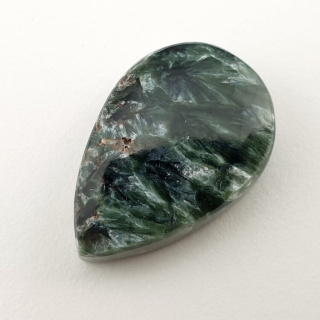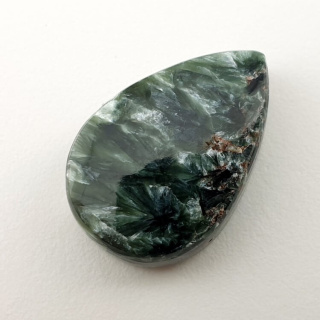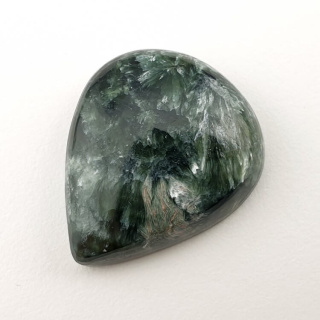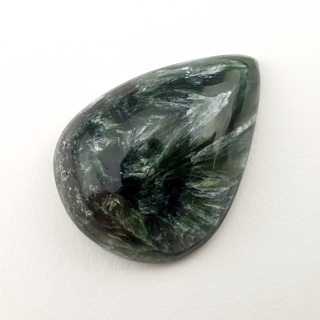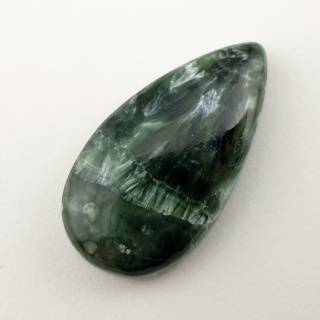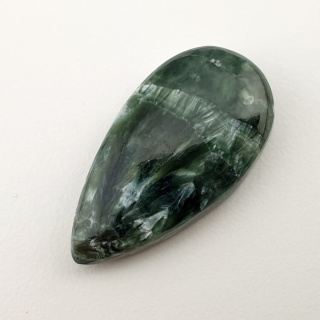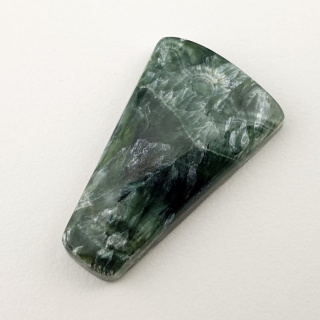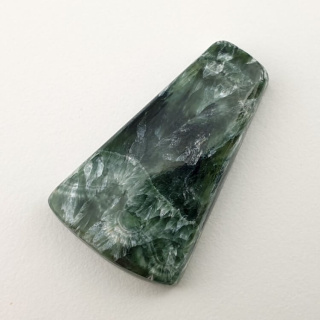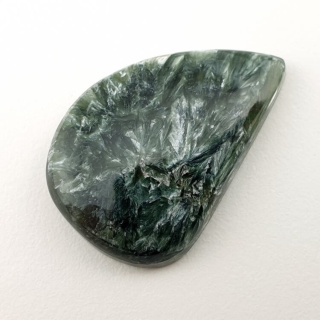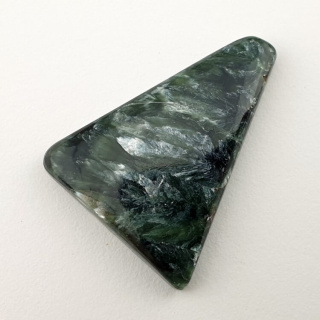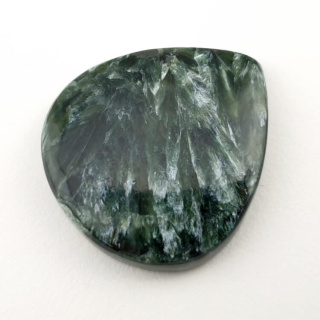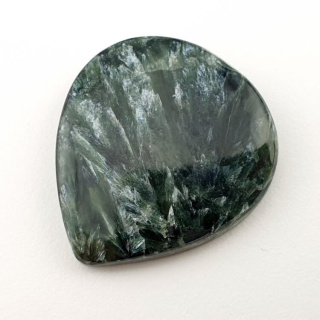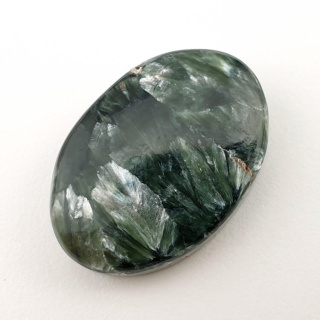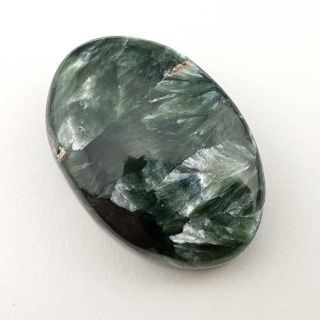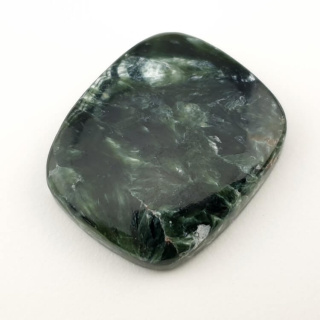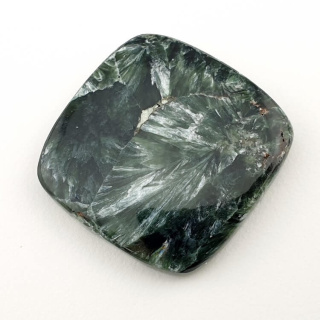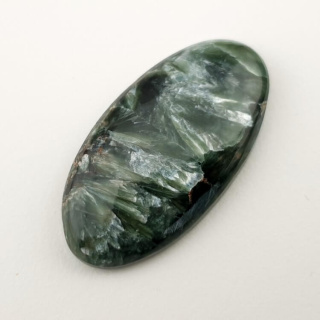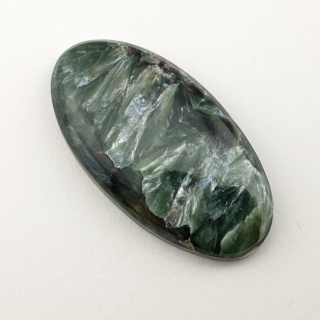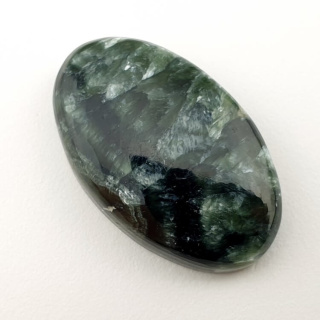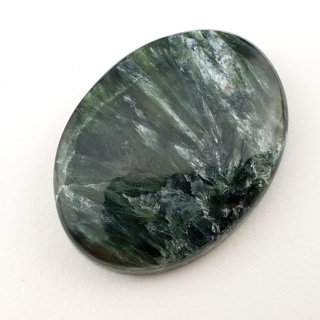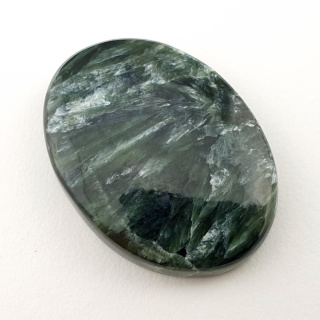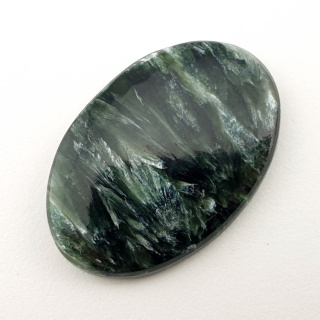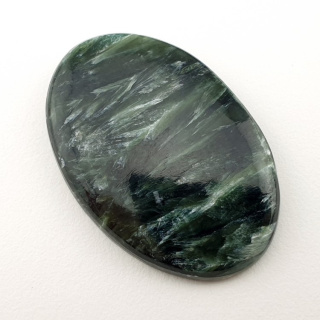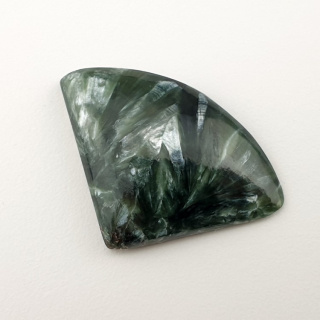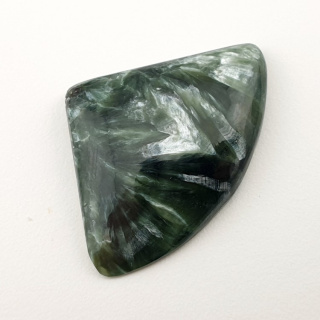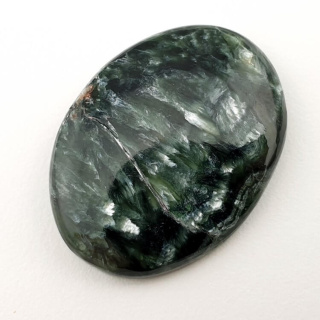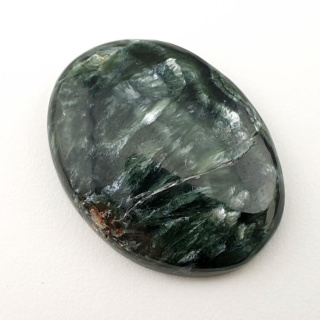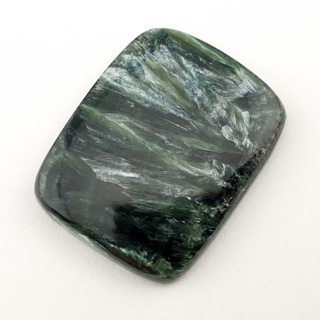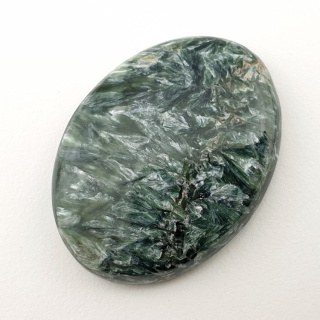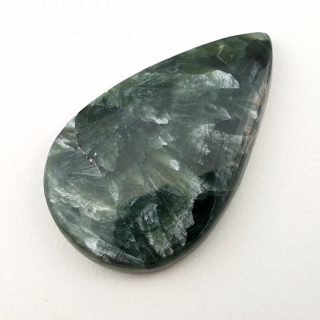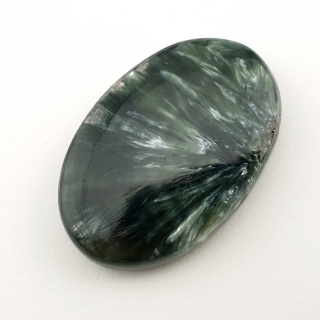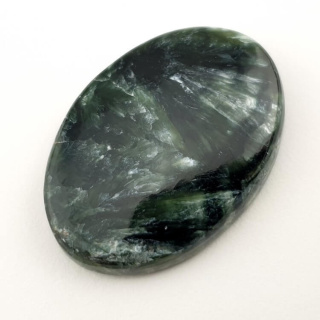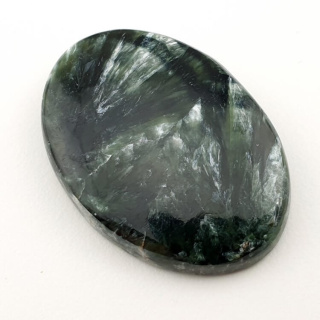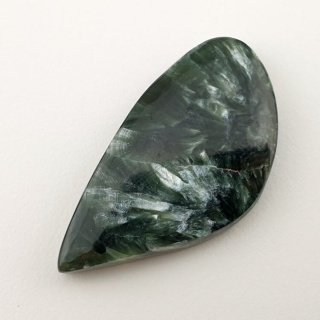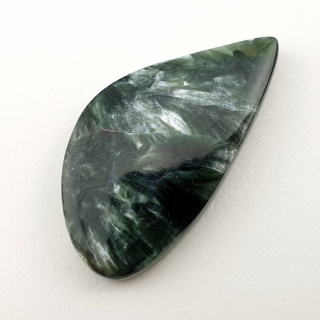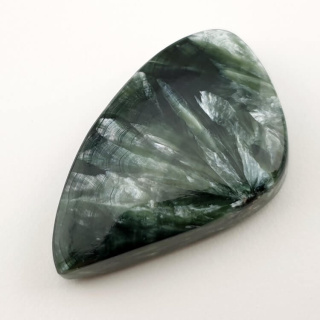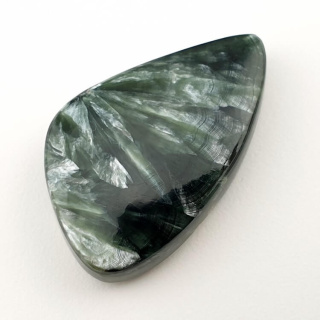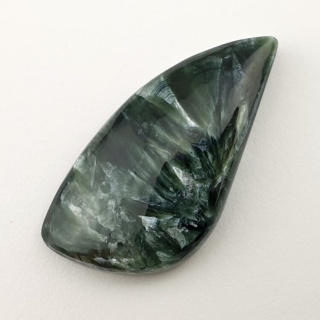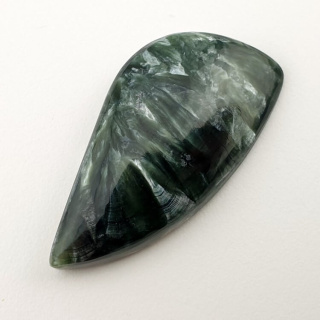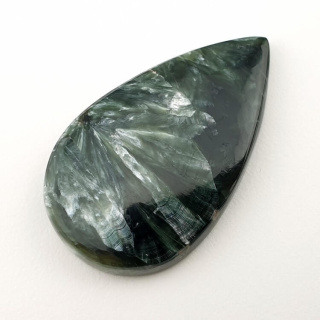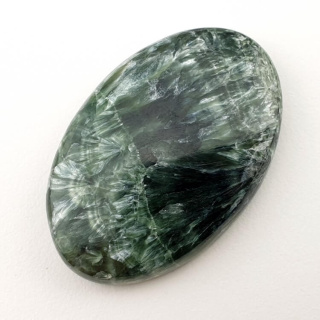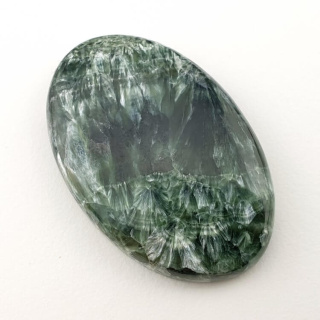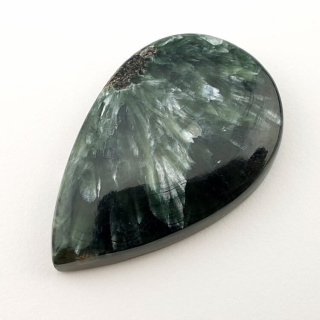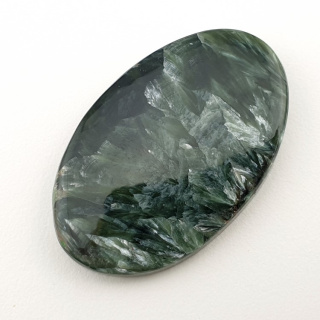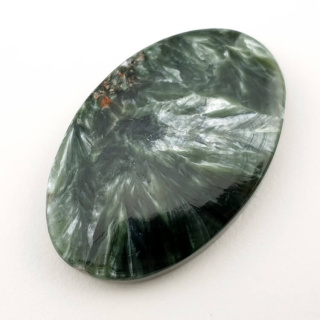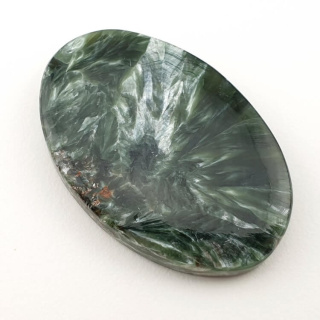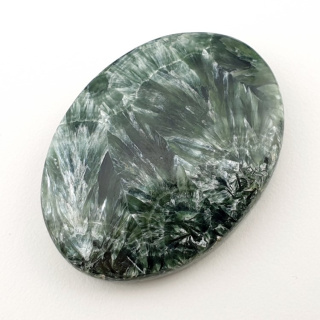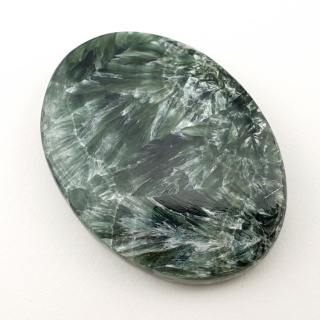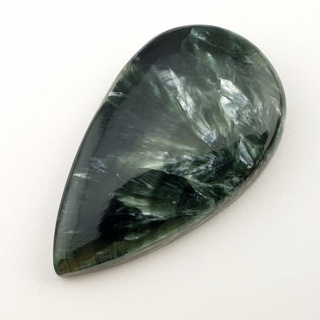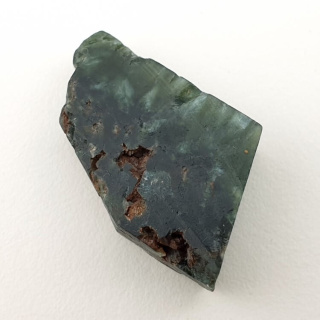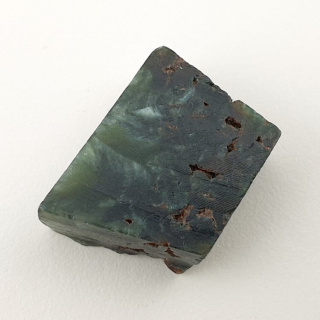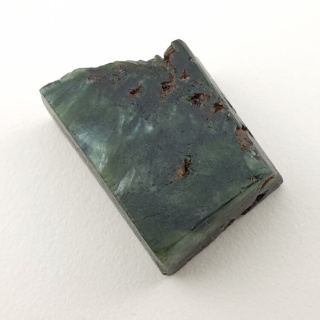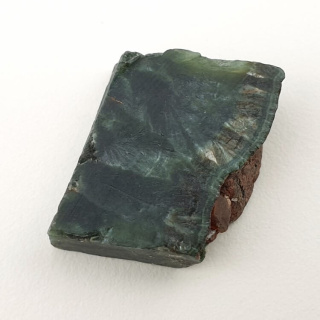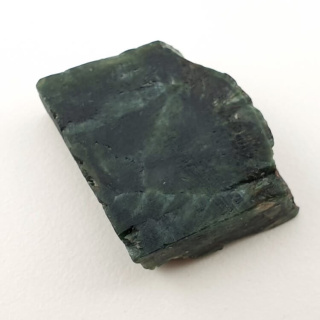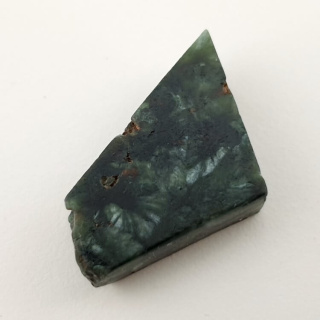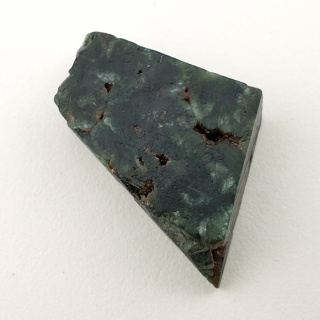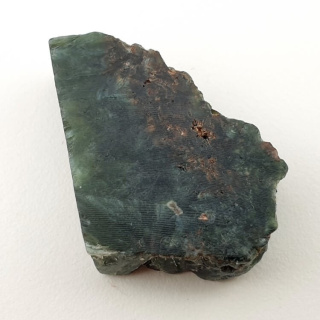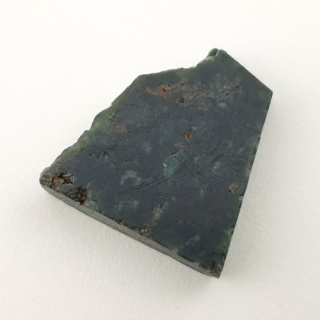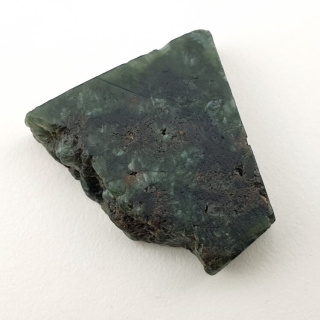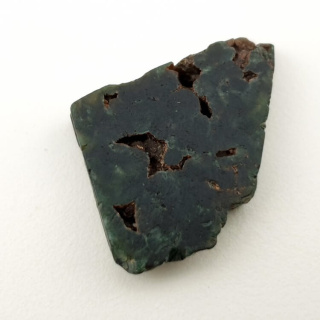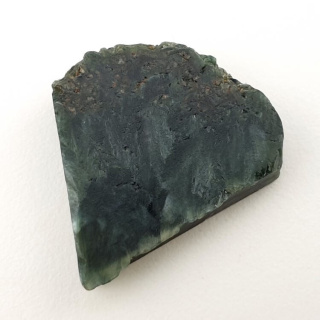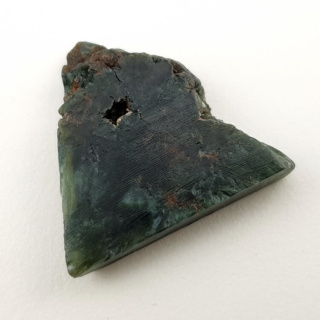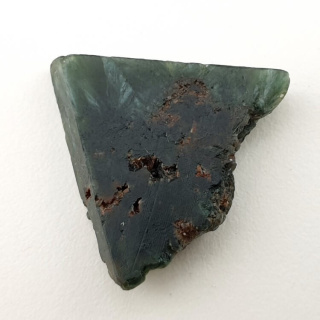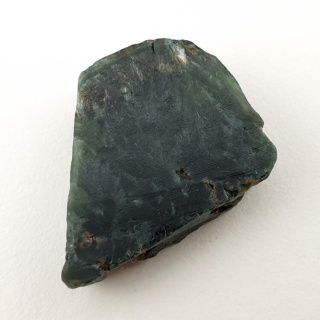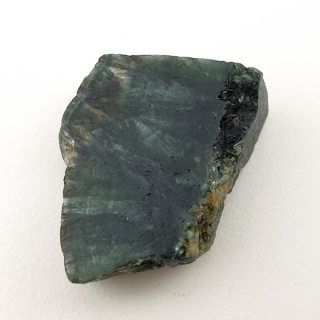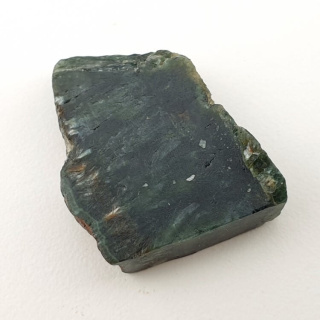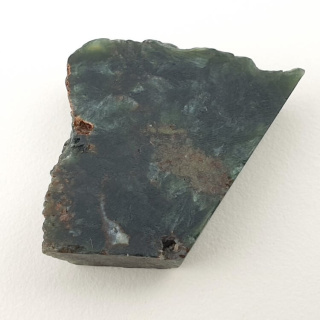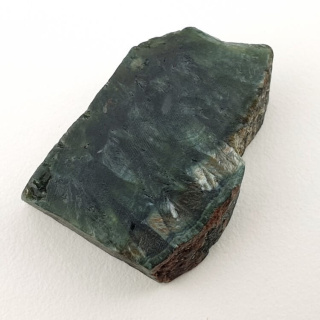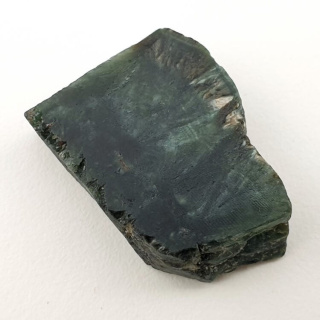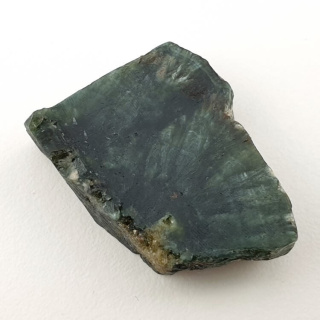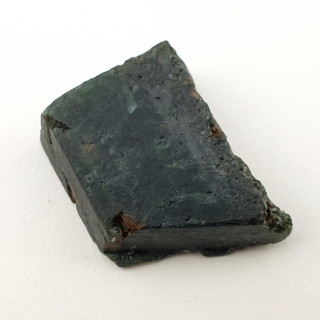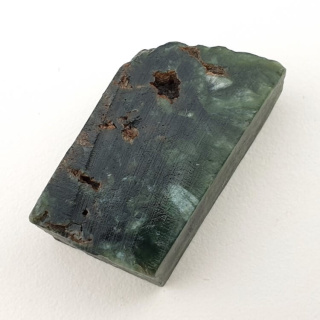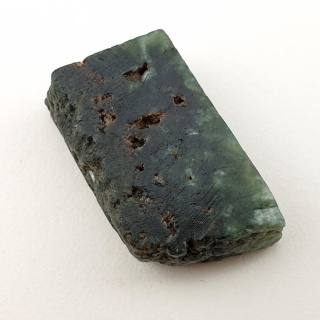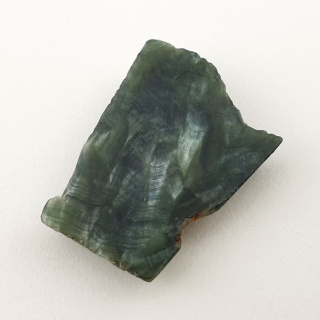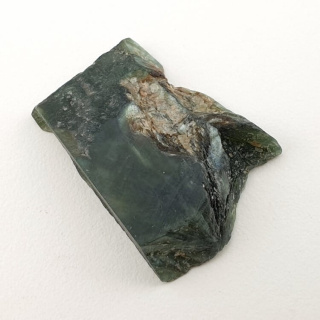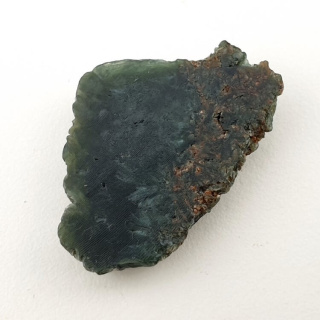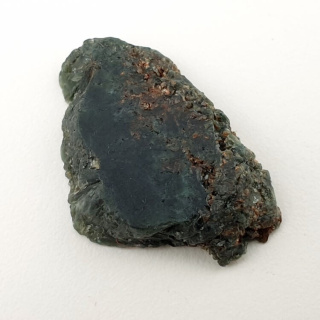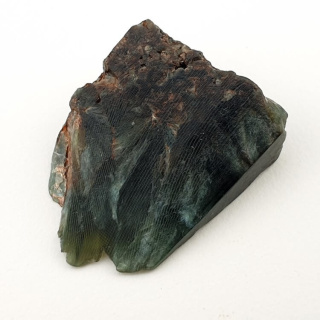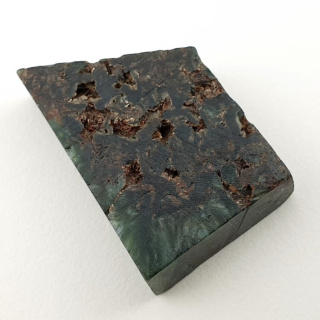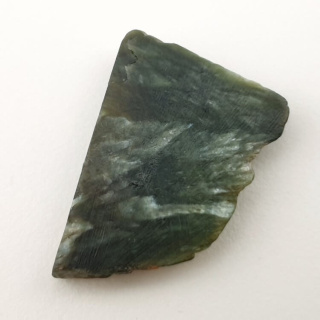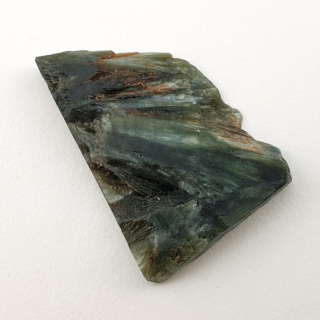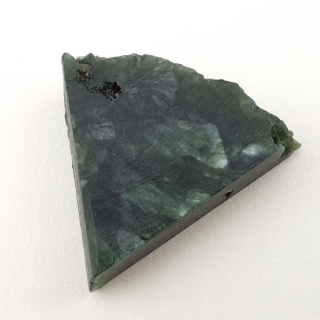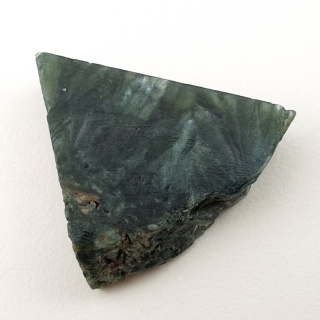Seraphinite: The stone of greenery and mystical peace
Number of products : 74What is seraphinite?
Seraphinite is a mineral from the silicate group, which is a form of chlorite, also known as clinochlore. It is usually a green mineral that occurs in flaky aggregates composed of delicate fibrous crystals. Its appearance is dominated by a green hue interspersed with white fibers with a pearly sheen. The name "seraphinite" was introduced because of the similarity of this mineral's color to the green robes of seraphim, hence the name.
Seraphinite is primarily used in jewelry as a decorative stone. Its unique appearance and color make it a popular choice for jewelry, especially in the form of rings, necklaces, and earrings.
What is the chemical composition of seraphinite and to which group of minerals does it belong?
Seraphinite is a mineral from the silicate group, more specifically from the chlorite group. Its chemical composition includes complex silicates of magnesium, iron, aluminum, and other elements. The main chemical components of seraphinite are:
- Magnesium silicate (Mg3Si2O5(OH)4) - forms the basic chemical structure of chlorite.
- Iron (Fe) - may be present in varying amounts, which affects the color of the mineral.
- Aluminum (Al) - may also be present in smaller amounts, affecting the color properties.
Additionally, seraphinite may contain trace amounts of other elements that affect its appearance and physical properties.
Where can natural deposits of seraphinite be found in the world?
Natural deposits of seraphinite can be found in various regions of the world, especially in areas with metamorphic rocks. Some of the most famous places where seraphinite can be found are:
- Russia - Seraphinite is particularly common in the Lake Baikal region of Siberia.
- Norway - High-quality seraphinite can be found in the Norwegian fjords.
- United States - Seraphinite occurs in some states, such as Alaska and New York.
- Canada - Seraphinite deposits can be found in some provinces, such as British Columbia.
- South Africa - Seraphinite can also be found there.
What are the physical properties of seraphinite?
Here are some basic physical properties of seraphinite:
- Color: Seraphinite usually occurs in shades of green, often with delicate patterns or spots. It can have different shades of green, from light green to dark green, and sometimes also yellow, brown, or gray inclusions.
- Hardness: Seraphinite usually has a hardness of 2 to 4 on the Mohs hardness scale, which means it is relatively soft and susceptible to scratching by harder materials.
- Luster: The surface of seraphinite can have a waxy or silky luster, depending on its structure and the type of light.
- Optical properties: Seraphinite often exhibits a cat's eye effect, which means that shimmering reflections may appear in the light.
- Crystallographic pattern: It crystallizes in a monoclinic system, but often occurs in the form of fibrous aggregates, scales, or fibers.
- Fracture: It is often brittle, and its fracture may be uneven.
- Density: The density of seraphinite is approximately 2.5 to 2.6 g/cm³.
These physical properties make seraphinite a popular mineral in jewelry and the decorative industry.
What are the main characteristics that distinguish seraphinite from other similar minerals?
The main characteristics that distinguish seraphinite from other similar minerals are:
- Crystal structure: Seraphinite crystallizes in a monoclinic system, which may be important when identifying the mineral under a microscope or based on its structure.
- Color: Although seraphinite is usually green, its shades may vary depending on the content of various elements, such as iron and aluminum.
- Optical effects: Seraphinite often exhibits characteristic optical effects, such as the cat's eye effect or cat's tail effect, which can be helpful in identification.
- Fibrous structure: Seraphinite often occurs in fibrous clusters, scales, or fibers, which can be a distinguishing feature from other minerals.
- Hardness: The hardness of seraphinite is usually relatively low, ranging from 2 to 4 on the Mohs hardness scale, which can help distinguish it from harder minerals.
- Specific locations: The locations where seraphinite occurs naturally can also be helpful in identification, as seraphinite is often associated with metamorphic rocks such as serpentinites.
All of these characteristics together help to identify seraphinite and distinguish it from other similar minerals.
Does seraphinite have any metaphysical significance?
Many gemstone and mineral enthusiasts attribute various meanings and metaphysical properties to seraphinite, although it is important to note that these interpretations are often based on pseudoscientific beliefs and practices rather than scientific evidence. Below are some of the potential metaphysical meanings that may be associated with seraphinite:
- Protection and purification: Some believe that seraphinite is a protective stone that helps ward off negative energies and promote well-being. It may also be credited with the ability to purify auras and energy spaces.
- Emotional harmony: Serafinite is often associated with emotional harmony, balance, and calmness. Wearing or keeping serafinite is believed to help relieve stress, anxiety, and emotional tension.
- Spiritual growth: Some believe that natural seraphinite can support spiritual growth and introspection, helping to uncover deeper truths and life purposes.
- Spiritual communication: Serafinite is sometimes considered a stone that facilitates communication with spirits or higher powers, supporting meditation and contemplative practices.
- Understanding and forgiveness: Serafinite is believed to support the process of understanding, acceptance, and forgiveness, both towards oneself and others.
However, it is important to remember that these meanings are often subjective and depend on personal beliefs and practices. Those interested in using seraphinite in metaphysical practices should approach it with an open mind and common sense, and consult with experienced practitioners or teachers if they have any doubts.
What are the most common colors of seraphinite and what determines their variety?
The most common colors of seraphinite are various shades of green, ranging from light green to dark green, sometimes with yellow, brown, or gray inclusions. The variety of colors of seraphinite is determined by several factors:
- Iron content: The presence of iron in the chemical structure of seraphinite can affect its shade of green. The more iron, the more intense the color of seraphinite can be.
- Other element content: Additional elements present in seraphinite, such as aluminum, can also affect its color. For example, the presence of aluminum can give seraphinite a more brown or gray hue.
- Degree of crystallization: The degree of crystallization and crystal structure of seraphinite can also affect its color. Some varieties with a more regular crystal structure may exhibit a more uniform color, while others that contain more impurities or inclusions may have a more varied color palette. Geological conditions: The geological conditions in which seraphinite was formed, such as temperature, pressure, and the chemical composition of the surrounding environment, can also influence its color. For example, seraphinite formed under different metamorphic conditions may exhibit differences in color depending on its geographical location and the geological history of the rocks.
![[{[item.product.name]}]]([{[item.product.photo.url]}] 75w)

